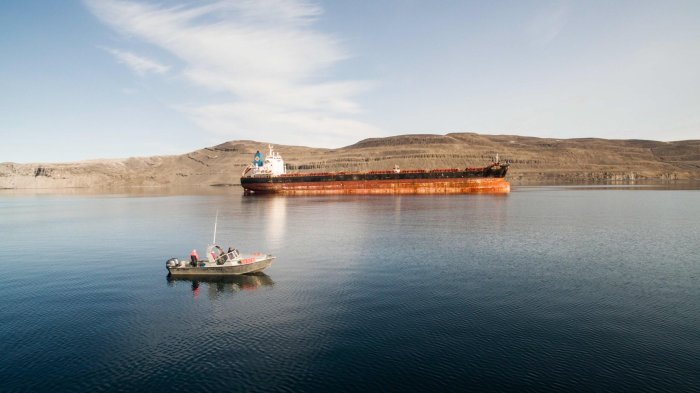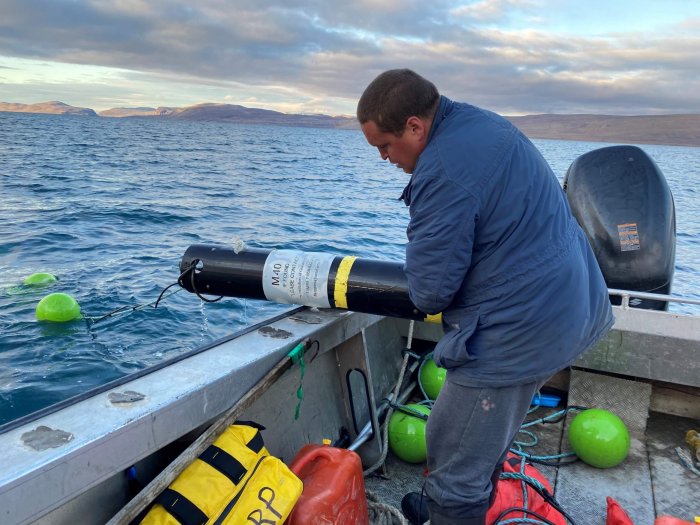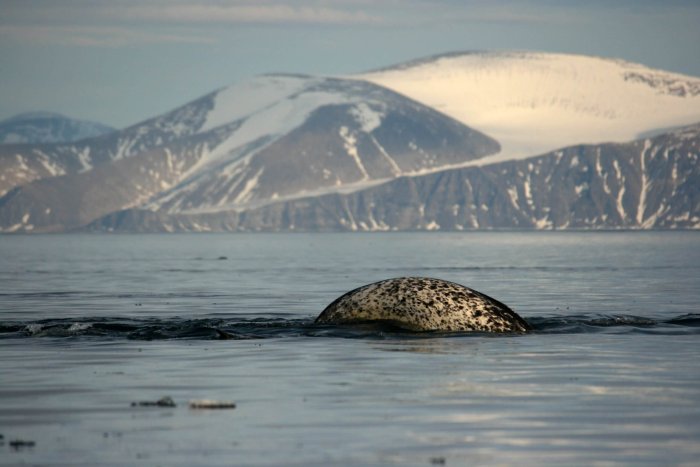
Listening to Narwhal
– By Kristin Westdal –
Mittimatalik (formerly Pond Inlet) is a small hamlet on the north end of Baffin Island in the Canadian Arctic. Surrounded by mountains, rivers, and glaciers, the community sits on the shores of beautiful Eclipse Sound. These waters are a biological hot spot, teeming with marine life, including the world’s largest population of narwhal each summer. To protect this habitat, Canada established the Tallurutiup Imanga National Marine Conservation Area.

At the same time, a huge iron ore mine located in this region is raising concerns about the impact of industrial shipping on narwhal and other marine mammals. Baffinland Iron Mines Corporation’s Mary River mine wants to double its production, a proposal that has prompted opposition from local Inuit communities.
To assess how narwhal respond to shipping noise, Oceans North launched an acoustic monitoring project eight years ago in collaboration with our local partner, Alex Ootoowak. Since then, our research has been studying the effect of an increase in underwater sound from vessel traffic. We have deployed two hydrophones in the region each year to gather data. As the project expanded, we teamed up with Dr. Josh Jones at the Scripps Institution of Oceanography, who had been measuring underwater sound in nearby Barrow Strait. With Josh’s assistance and new instruments that could be deployed all year, we were able to focus on the critical migration time in the spring and fall.

To date, our research shows that narwhal are disturbed by the presence of large vessels and the underwater noise they generate. Local hunters have corroborated this observation. We’ve found that narwhal react to ship noise at lower acoustic ranges than was expected and that this noise can mask their social communication and navigation abilities. It can also cause behavioural disturbances that affect their ability to carry out vital life functions.
Over the last two years, hunters have noticed a significant decrease in the number of narwhals in the region, an observation confirmed through aerial survey abundance estimates. The effects of vessel traffic at current volumes have shown the potential to harm individual narwhal or change patterns of local abundance and distribution, patterns long recognized by Inuit who live in this area.

Oceans North, through our partnerships in Mittimatalik, plans to continue this important work that can provide the data needed to protect narwhal and other marine life as climate change and industrial expansion pose risks to the Arctic.
Kristin Westdal is Arctic Field Science Director at Oceans North, a charitable organization that supports marine conservation in partnership with Indigenous and coastal communities.
